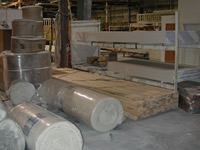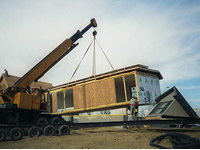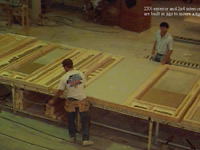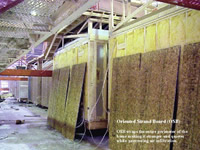Legendary
Homes have manufactures located in Topeka Indiana in the heart of the Amish community of
LaGrange County, IN and over 60% of the workers are Amish themselves.
 All
homes by Legendary Homes meet the exacting requirements set forth by
each state. What does this mean? A Legendary home will be built to the
same codes and meet the same requirements as a traditional site-built
home. Additionally, every home goes through over 50 inspections by the
quality control department and by a third party inspector acting on
each state's behalf. All
homes by Legendary Homes meet the exacting requirements set forth by
each state. What does this mean? A Legendary home will be built to the
same codes and meet the same requirements as a traditional site-built
home. Additionally, every home goes through over 50 inspections by the
quality control department and by a third party inspector acting on
each state's behalf.
COMPARE
TO SITE BUILT Homes
All building
materials used are stored indoors.
They never see the weather except when being delivered from the
suppliers.

Home construction process reflects Henry Ford at his finest. Each
worker has a task that he specializes in and only he does that task
every day. A wall
framer will not build
floors and a floor framer will not build walls. Homes are built in a
true production environment.
2x6 exterior walls
R-19 exterior wall insulation
50# roof load with R-40 insulation
OSB total exterior walls sheathing
Engineered truss floor joists
Carpet, window treatments and appliances included
CONSTRUCTION
METHODS
Today's modular homes are computer engineered to meet all national,
state & local building standards. With hundreds of stock plans
to start with, and the ability to computer generate unlimited
variations, the design of your "dream home" is only limited to your
imagination.
As with traditional building methods a modular home starts with its
framework. Modular homes typically use 30% more material in the framing
to insure a safe and secure trip to its destination. Most factories
GLUE as well as nail or screw the components of the home together for a
more solid assembly. Most modular homes are now built in a modern
controlled environment using high quality materials. They are precision
engineered for a lifetime of trouble-free structural durability.
Quality control is maintained by constant inspection throughout the
construction process.
With modular home construction, there are things they can do in a factory such as foam-seal adhesive which helps a great deal in minimize drywall cracks, that they CAN'T do on stick built homes.
In starting a modular home, great detail is given to the layout
& strength of the floor, since this is what will carry the
weight of the rest of the home. After the floor joist &
sub-flooring are in place, the wall panels are put in place. The wall
panels will already have the sheetrock on the inside. The electric
& plumbing can then be installed. After the wiring &
piping is done, all nooks, crannies & crevices are sealed with
insulation and the wall cavity is insulated.  Next comes the exterior
sheathing, roofing & finished siding. Next comes the exterior
sheathing, roofing & finished siding. Somewhere in the midst of
all this the windows & doors, bath & kitchen fixtures,
carpets, and cabinets are installed. The completed product is then
wrapped with a protective material for shipping, loaded on carriers and
sent on it's way to you. Of course this is an oversimplified
description of the real workmanship and quality materials that go into
each of these homes, but it gives you a basic idea of the technological
advances in the modular home industry.
Before investing in a home that may take the better part of your career
to pay for, visit our model homes located here. |
 All
homes by Legendary Homes meet the exacting requirements set forth by
each state. What does this mean? A Legendary home will be built to the
same codes and meet the same requirements as a traditional site-built
home. Additionally, every home goes through over 50 inspections by the
quality control department and by a third party inspector acting on
each state's behalf.
All
homes by Legendary Homes meet the exacting requirements set forth by
each state. What does this mean? A Legendary home will be built to the
same codes and meet the same requirements as a traditional site-built
home. Additionally, every home goes through over 50 inspections by the
quality control department and by a third party inspector acting on
each state's behalf.

 Next comes the exterior
sheathing, roofing & finished siding.
Next comes the exterior
sheathing, roofing & finished siding.